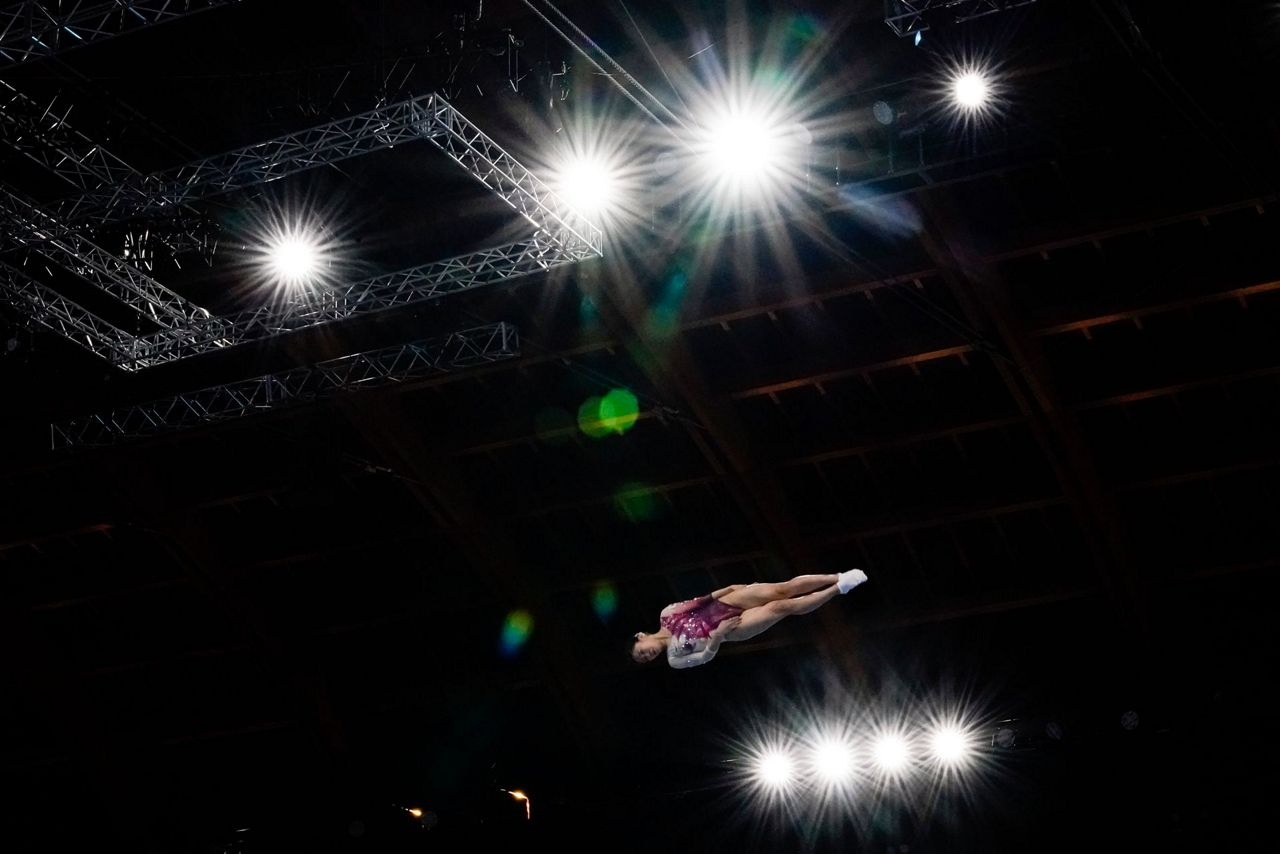TOKYO (AP) — You know those epic cutaways in movies and on TV that show long shots of Superman flying to the rescue, or taking off immediately after saving the day? That's what Associated Press photographer Ashley Landis' photos of trampoline events at the Tokyo Olympics evoke.
Athletes soar past lights and pop from dark backdrops as the trajectory of bounces catapults them through the air. It is, as British bronze medalize Bryony Page put it last week, “like driving your own roller coaster.”
Trampoline competition, which ended Saturday, is an athletic solution to the question so many humans have asked for thousands of years: What if I could fly? Turns out you can, to an extent, with a lot of training and ability and commitment. The tradeoff: It can be perilous.
“Trampoline isn’t a sport I thought of as dangerous, but after seeing athletes fly 30 feet in the air and then nearly fall off the trampoline, I have changed my mind,” Landis says. “I don’t know of another sport where the coach has to follow the athlete with a giant pillow in case they get slightly off center.”
That was most apparent, she says, when Aliaksei Shostak of the United States flipped beautifully in the air, and then his right leg plunged to the ground between trampoline springs.
“Fortunately, he was not badly injured,” Landis says. “It’s a high-risk, artistic sport with very little room for error.”
___
More AP Olympics: https://apnews.com/hub/2020-tokyo-olympics and https://twitter.com/AP_Sports
Copyright 2021 The Associated Press. All rights reserved. This material may not be published, broadcast, rewritten or redistributed without permission.





